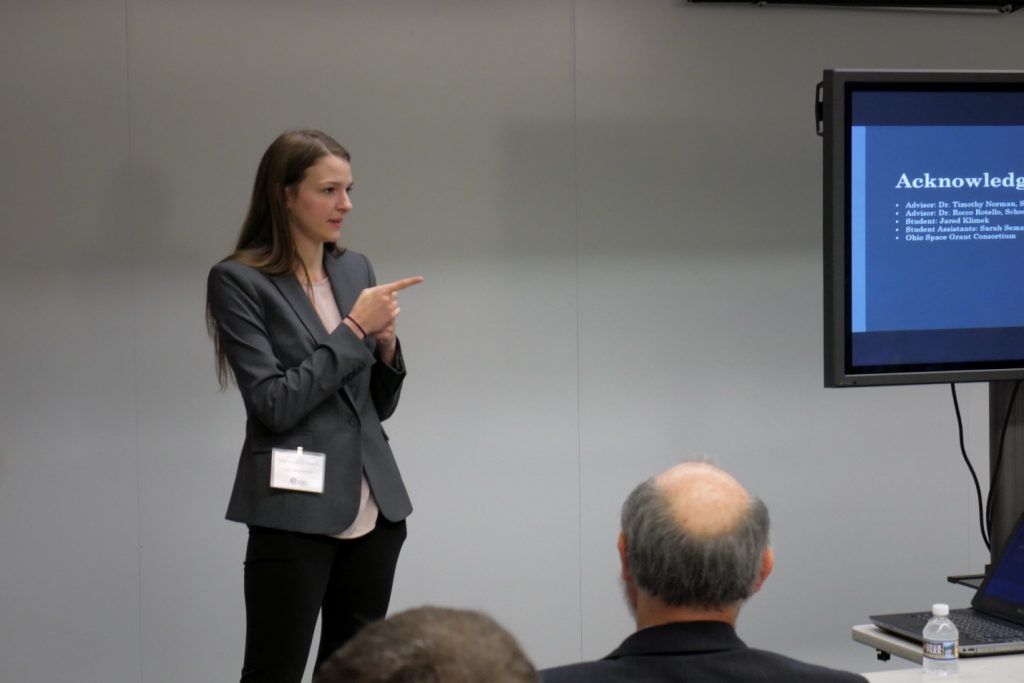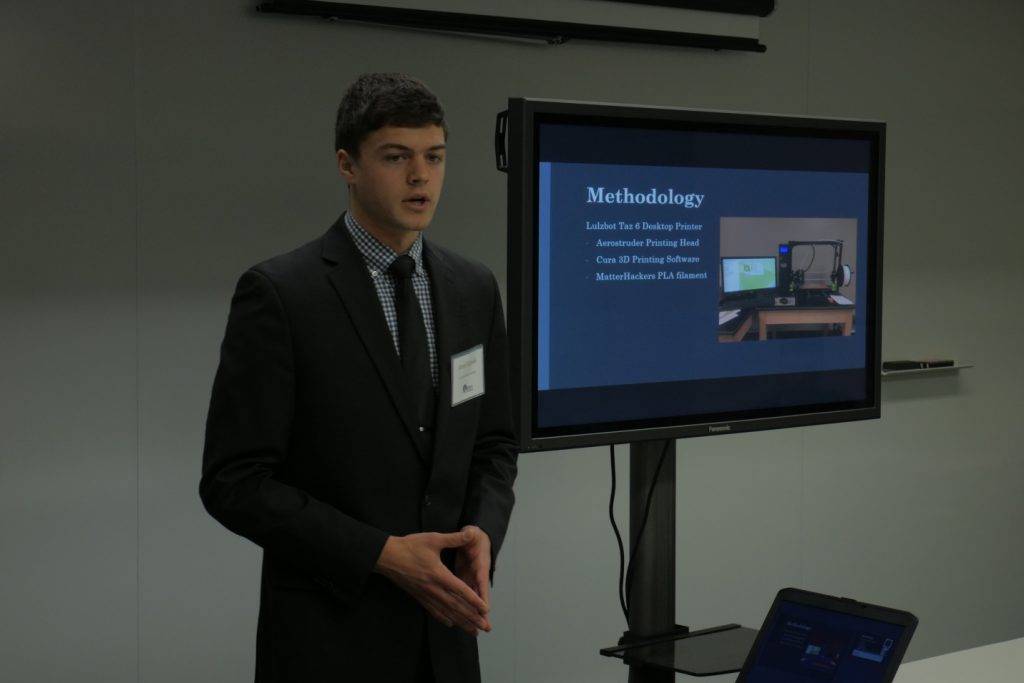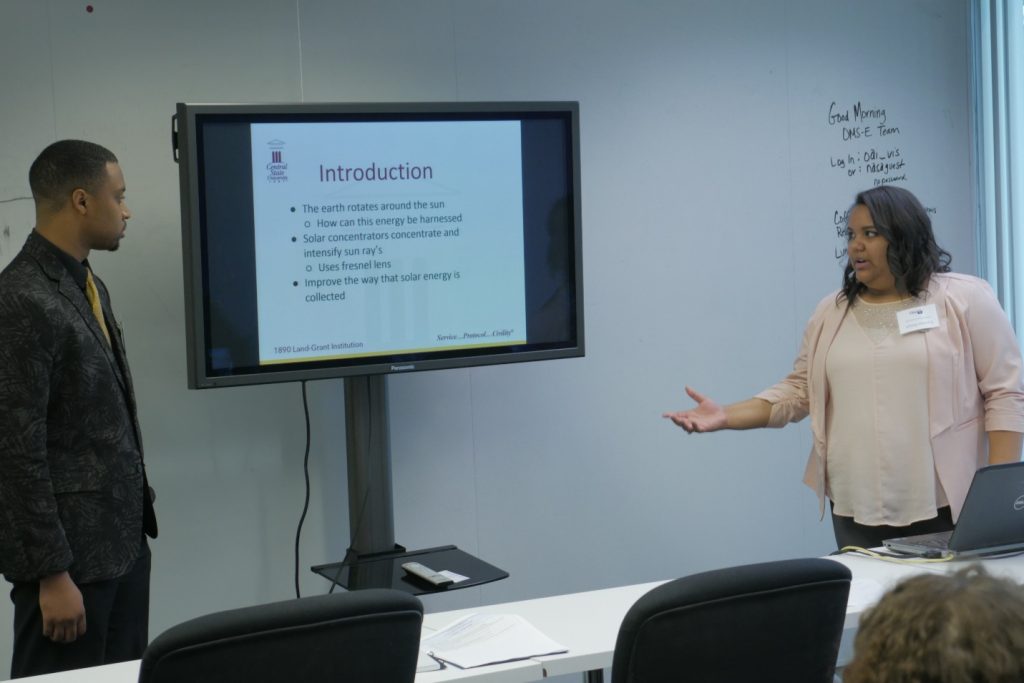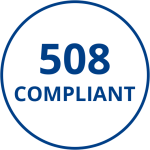The OSGC would like to recognize and thank NASA, the Ohio Department of Higher Education (State of Ohio) and the Ohio Aerospace Institute for providing financial support to our Scholarship, Fellowship and internship programs! These guidelines explain the fellowship program requirements, which differ slightly for federal and state funding.
In an effort to encourage advanced education in STEM (Science, Technology, Engineering, or Mathematics) the Ohio Space Grant Consortium (OSGC) offers financial support through competitively awarded fellowship opportunities. Fellowships are funded by Congress to the National Space Grant College and Fellowship Program and administered through a grant from the National Aeronautics and Space Administration (NASA). State of Ohio funds are also provided to OAI by ODHE to fund additional MS-level fellowships as described below.
OSGC Fellowships make awards to First Year Graduate Students. Awards are $23,40 (with a minimum $3,400 cost-share from the university, plus a tuition waiver) for one academic school year (two semesters). Note that no indirect charges are allowed by the university for Master’s fellowship awards. State-funded awards provide $23,400 without a required university cost share match but do require a university tuition waiver. All Master’s fellowship awards are contingent on available funding.



All fellowship recipients are required to propose and initiate a research project under the guidance of a faculty mentor during the funded academic year. The research project must be STEM-related and must be in direct alignment with one of the five (5) NASA Mission Directorates: Aeronautics Research Mission Directorate (ARMD); Space Operations Mission Directorate (SOMD); Exploration Systems Development Mission Directorate (ESDMD); Science Mission Directorate (SMD); and Space Technology Mission Directorate (STMD).
Eligibility: To be considered for a NASA fellowship, students must:
OSGC member schools and related STEM disciplines are listed below.
Student cannot receive a concurrent other fellowship with tuition waiver.
Post-award Requirements: Recipients must attend and present the findings of their research/educational activity at the Annual Student Research Symposium, held every Spring at the Ohio Aerospace Institute in Cleveland, Ohio.
Budget:
Note that no indirect charges are allowed by the university for fellowship awards. All fellowship awards are contingent on available funding. For federal funded awards, the university must provide a minimum $3,400 and guarantee of a full tuition waiver. For state-funded awards, the university must provide a guarantee of full tuition waiver only.
OSGC will provide the funding to the university in late Summer.
Application Package:
Interested students must submit a completed application package that includes the following:
Application Form
Complete the form, including applicant and campus representative signatures.
Personal Statement: Up to 2 pages, single-spaced, 12-point font, 1″ margins.
Research Statement: The research statement must be written by the applicant. Up to 2 pages, single-spaced, 12-point font, 1″ margins including figures and tables. Figure and table captions may be 10-point font. References are not counted as part of the two-page total. The following subheadings must be followed.
Goals and scope: Describe the goals and scope of the proposed research. What will this research accomplish? What problem does it address? How does the project align with one or more of the four NASA Mission Directorates?
Context: Briefly contextualize your project in relationship to others’ work. Explain how the project differs from or extends previous, related work. What has previously been done in the area? How does this project relate to the previous work?
Methods: Describe the methods you will use to accomplish the project. How will the work be accomplished?
It may be helpful to discuss: hypotheses or research questions, operationalization and instrumentation, research sites, sample size calculations, research design, data collection, and data analysis.
Timeline: Provide an expected timetable for the research (e.g., when major activities will start, how long they will take, when they will be completed).
Significance: Describe the significance of your research. Why is it important to your discipline? What is the potential impact of the project on society?
Literature cited: Single-spaced,12-point font, 1” margins. Literature cited does not count toward the two-page limit.
Resume:
Up to 2 pages, single-spaced, 12-point font, 1″ margins. Please use the following subheadings.
Education: List your undergraduate and proposed graduate degrees.
Briefly describe specific academic experiences/coursework that is particularly related to your proposed Master’s degree and proposed research.
Relevant experience: List and briefly describe academic, non-academic and extracurricular activities since entering college. Experiences can include coursework, employment, research, internships, student and other organizations.
Relevant skills: List and briefly describe skills you have garnered that are relevant to your prosed Master’s degree and/or research project.
Publications and Presentations: For publications and presentations, give complete citations using a standard formatting style, e.g., APA, IEEE, AIChe, etc. For presentations, also specify the format (e.g., talk, poster, panel discussion) and remember to include where the presentation was made (e.g., your home institution, external conference, or external organization). Do not include classroom or lab presentations.
Honors and Awards: List and briefly describe any grants and awards received by the applicant since entering college. This should include scholarships, honorary societies, awards, engineering or scientific student leadership roles whether academic, non-academic or extracurricular. Do not include Dean’s list.
Include any fellowship that you hold at the time of submission of this application (Note, student are not eligible for this award if they currently holding another Federal fellowship).
Letters of recommendation: Submit two letters of recommendation. Up to 1 page each, legible font, no spacing or margin requirements
Unofficial Transcripts: Submit for both undergraduate and previous graduate work.
Application Submission:
NOTE: Applications must be consistent with the guidelines and should be reviewed by the campus representative. The review committee has the right to return without review any applications that do not conform to these format requirements prior to the close of the application deadline. Revised applications may be resubmitted for consideration prior to the deadline. Applications that are not compliant after the deadline will be returned without review.
Applications are to be submitted to the appropriate Campus Representative by February 1st. Applications are due to the OSGC Program Office by February 15th.
Interested students should contact the Campus Representative at their home university for more info.
• Bowling Green State University
• Case Western Reserve University
• Cedarville University
• Central State University
• Cleveland State University
• Kent State University
• Marietta College
• Miami University
• Ohio Northern University
• The Ohio State University
• Ohio University
• The University of Akron
• University of Cincinnati
• University of Dayton
• The University of Toledo
• Wilberforce University
• Wright State University
• Youngstown State University
• Aeronautical Engineering
• Aerospace Engineering
• Astronomy
• Biology
• Biomedical Engineering
• Chemical Engineering
• Chemistry
• Civil Engineering
• Computer Science and Engineering
• Control Engineering
• Electrical Engineering
• Engineering Mechanics
• Geography
• Geology
• Industrial Engineering
• Manufacturing Engineering
• Material Science and Engineering
• Mathematics
• Mechanical Engineering
• Nuclear Engineering
• Petroleum Engineering
• Physics
• Radiological Engineering
• Systems Engineering
• Welding Engineering

2026-2027 Scholarship Applications will open September 1st, 2025. Download the following 2026-2027 graduate fellowship materials:
Ohio Space Grant Consortium
22800 Cedar Point Road | Cleveland, OH 44142
Phone: (440) 962-3099 | Fax: (440) 962-3200 | E-mail: osgc@oai.org

© All Rights Reserved